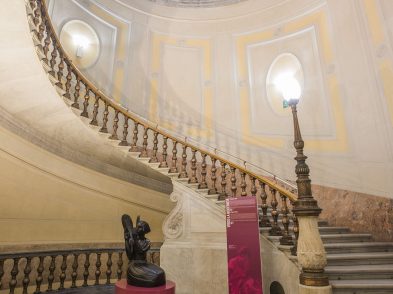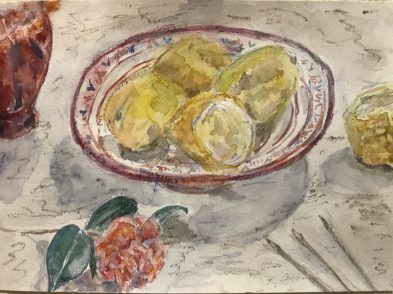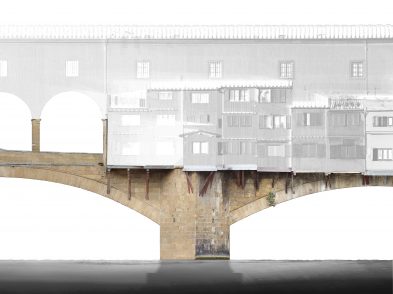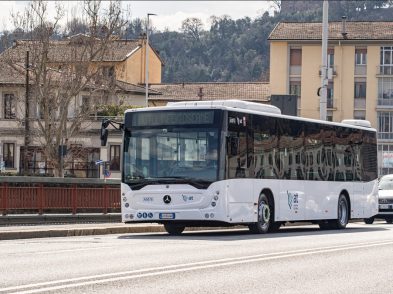We introduce this space as a forum in which TF readers can voice and exchange their opinions, concerns and kudos about life in Florence and Italy. E-mail your letters to the editor, essays and opinion pieces to inbox@theflorentine.net and we will publish them, depending on available space, in this column, Opinions & Editorials.
Located on the slopes of Fiesole, Villa Il Palmerino has been a meeting place for artists and intellectuals for centuries. From 1889 to 1935, under the ownership of the British writer Vernon Lee, pseudonym of Violet Paget, who was a friend of Henry James, it was a focus for Anglo-American and Florentine cultural life and the present owner, Federica Paretti, continues this tradition. She is a choreographer who inherited the house from her grandmother, the painter Lola Costa, and is committed, together with her family, keeping the Villa’s traditions alive through a cultural association open to all. This year the programme highlights women artists.
On a beautiful Spring afternoon, the Villa’s gardens hosted an open air ‘salon’ where Professor Jane Fortune talked about her book Invisible Women: Forgotten Artists of Florence with Dr. Cristina Acidini, superintendent of Florence’s Polo Museale, and writer Linda Falcone, before a mixed audience of Italian and English speakers. Jane’s passions for art and for Florence led to her wanting to ‘give something back’ in a highly practical way, by restoring to the city some of its greatest forgotten masterpieces.
As a member of the National Advisory Board of the Washington D.C.-based National Museum of Women in the Arts (NMWA), Jane is acutely aware of the gender issues that have governed which artworks go on public display. She founded, and chairs, the Florence Committee of the NMWA, committed to conserving, preserving and restoring work by women artists in Florence museums. She has also created a foundation in the United States, called Advancing Women Artists, which is committed to restoration and to creating ‘spaces’ where these restored works can be exhibited, worldwide.
A chance find at a book fair introduced her to the work of Suor Plautilla Nelli, a sixteenth century nun and the first recognized woman painter of Florence. Suor Plautilla’s neglected works became the NMWA Florence Committee’s first restoration projects, and through her research Jane realised that the majority of works by women artists in the collections of Florentine museums were in storage. Artemisia Gentileschi’s David and Bathsheba had been in various museum deposits for 373 years, only emerging once or twice for exhibitions until Jane unearthed and restored it. Today, it is on permanent exhibition in the Pitti Palace.
Jane’s five years of research led to her writing Invisible Women about Florence’s forgotten women artists, but before the book could be completed, she discovered that she had breast cancer and had to remain in the United States for treatment. She asked Linda Falcone to continue the on-site research, acknowledging that at a difficult time: ‘while I was fighting for my life, Linda was fighting for my book.’ This is a moving and apposite example of what can be achieved through creative thinking and collaboration.
The most influential museum director in Tuscany, Dr. Acidini’s support has been crucial for gaining access to the city’s archives and deposits. There is a spirit of mutual collaboration between Jane’s committee and the city’s 30 women museum directors. Over the past five years, whenever they are in town, Jane and her partner, Bob Hesse, host a monthly social lunch to bring them together. The directors present to the committee the work they would like restored (with an estimate) and the committee decides whether to undertake the project. Restorations are only carried out by female restorers and the work is fully documented in a DVD. At Villa Il Palmerino, Dr. Acidini acknowledged that most of the qualified restorers working in Florence today are, in fact, women.
It is interesting that the committee does not just focus on ‘big’ names but will also restore works by lesser-known artists. Once restored, however, they may still not be displayed, so it is important to find a suitable space to show both the restored works and other hidden works by women artists in the Florentine collections. As Jane said, they need ‘a space of their own’.
Invisible Women reveals that there were highly prized women artists working for the Medici. The book is so significant that Dr. Acidini presented a copy to the Uffizi Library. At this point, however, it is necessary to go further and make the actual works visible to the public. At Villa Il Palmerino, Dr. Acidini explained that there were few women artists on show in Florentine museums because today’s directors were merely following the choices and decisions of their predecessors, the patrons who had chosen what they wished to display on their walls: if there were few women represented, it was because their work was of inferior quality.
I spoke from the audience, pointing out that among the statistics given by Jane was the fact that among the 37 works by women on public view in the Pitti Palace, 21 were by Giovanna Garzoni, an artist whose work I like, but a surprising choice since Garzoni is largely known today for her small-scale watercolour still lifes on paper. Nevertheless, the Medici prized her work and contemporary directors have decided to give her unique prominence as a woman artist in major museums, while other significant works, such as those of Artemisia Gentileschi, are not displayed.
The choice to display a work is not solely a question of quality. What we see displayed in public and appreciate as art reflects the changing tastes and preoccupations of the age we live in. Rachel Ruysch, a contemporary of Rembrandt’s who specialised in still lifes (two works are on public view in the Pitti and two are in deposit), was a better-known, higher-selling artist in her lifetime than Rembrandt, who often struggled with poverty. The work of Botticcelli, now the main attraction for most visitors to the Uffizi, suffered centuries of neglect until it was ‘rediscovered’ and appreciated afresh in the nineteenth century.
The question now is this: Where will we get the chance to see the works of women artists currently in storage? And will they return there even after restoration? While there are many possibilities in venues around town, at Villa Il Palmerino I suggested that a perfect place for such a show could be the ‘Reali Poste’-a part of the Uffizi complex where a series of interesting themed exhibitions have been held in the past. It is the venue for the annual I Mai Visti (‘The Never Seen’), which draws attention to works in the Uffizi deposits.
In a central position in the city, the space is accessible to all-the free exhibitions are on the ground floor, guaranteeing maximum visibility. The initiative is a good example of how the intelligent presentation of an artwork can stimulate new interest and reassessment. Surely this is exactly what is needed for these long-neglected works?
A number of people approached me after the talk at Villa Il Palmerino, agreeing with what I had said. Perhaps we, the English-speaking Florentines and friends of Florence, can boost public awareness and create a demand for these works to be seen. This could help to reintegrate Florence’s forgotten women artists more fully into the history and life of the city.








